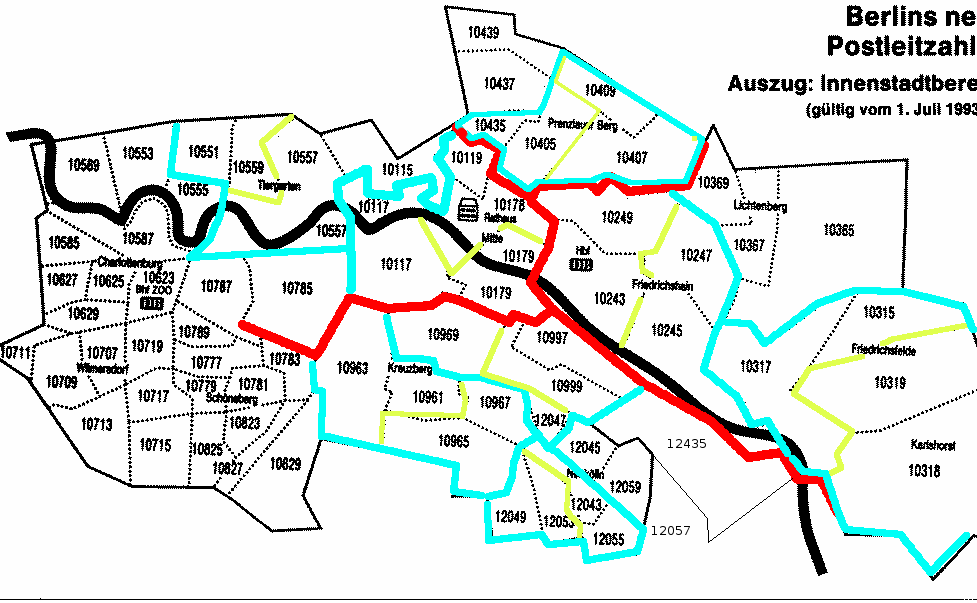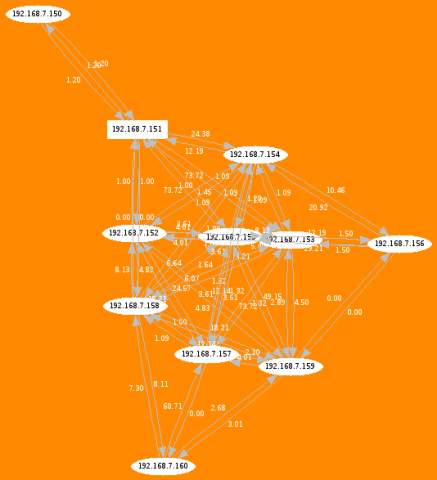The social technologies of the wireless community network are technologies specifically developed to support social goals, such as community networking. Typically, new technologes are developed by large firms or the state. The achievements of wireless community networks demonstrate that there is an alternative, community based innovations. This chapter presents the genealogy of some of the key technologies needed for wireless community networking and discusses their social content.
A happy accident in June 2003 opened the gates to wireless cornucopia. Developers on the Linux Kernel Mailinglist started making comments about a product of Linksys company. In March 2003, Cisco Systems had bought Linksys for US$500 million. The firmware of the wireless access point WRT54G included both the Linux kernel and other code released under the General Public License (GPL). The company had published the firmware as binary, but not the source code, which was against the statutes of the GPL. As the developer who revealed the GPL violations quite happily added, this meant that a whole family of chips by one wireless provider, Broadcom 802.11b/g, supported Linux.
“Complaints appeared on discussion boards such as LKML and Slashdot claiming that Linksys was violating the GPL by not providing source code for certain code used in its WRT54G wireless access point.” (see Linux Insider: http://www.linuxinsider.com/story/43996.html)
The Free Software Foundation stepped in, leading the campaign for enforcement of the GPL. Cisco was brought to comply by publishing the source code. This enabled a revolution, albeit one that most people have never heard of before: the revolution of firmware flashing.
Based on the sourcecode for the Linksys product, a new initiative called OpenWRT came into existence, and began making an increasingly stable Linux distribution specifically for small wireless devices.
The WRT54G became the most popular router for community networks, and this is where OpenWRT has its name from. Meanwhile, OpenWRT works on many embedded devices such as WLAN routers but also wireless hard-drives and basically everything that networks. (Here is a long list of devices on which it is possibly running: http://wiki.openwrt.org/toh/possible)
Firmware replacement had been the battle-cry of East London artist-engineers such as Alexei Blinov and Adam Burns in 2003, 2004. It was possible, in principle, even before OpenWRT, but was very hard. At the time, early ideas for Hivenetworks were being flouted around. This project, which went through many instantiations, initially was quite utopian.
It was a boldfaced claim that you could make multi-hop networks using mesh network protocols that use every available snippet of network connectivity, be it Bluetooth, Wireless, LAN or you have it; furthermore, those devices should also be self-announcing, if they carry any services. Taking inspiration from the zeroconf protocol, the meshing devices would tell if they offer services such as streams, voice chat, podcasts, skype, jabber, and others.
With OpenWRT, this utopia came that bit closer, but as this http://www.wireless-forum.ch/forum/viewtopic.php?t=16140 interview with Sven Ola-Tücke also attests to, it needed great skill and tenacity, even with OpenWRT. You needed to create a directory on a Linux machine for compiling the firmware. To compile one Linux kernel on a machine for another machine, is very difficult, especially if the other machine is so different. Cross-chain compilation it was called by my London friends Alexei and Adam. Once you had a customized Linux image for your device, you needed to transfer it to the device and “flash” it, replace its existing firmware with the new one.
If anything went wrong, you had not flashed it but “bricked” it. The devices electronics were as dead as a brick. As Alexei Blinov pointed out, thats quite unfair against bricks because they can actually be still useful. A dead WRT54G is really only electronic toxic trash. Once you have successfully replaced the firmware, you still need to configure it, all via ssh and shell. Last not least, you had to make the OLSR work with the firewall. If then everything worked well, you could indeed mesh using cheap near ubiquitous devices in autumn 2004. The liberation of hardware to build the network commons through OpenWRT was undoubtedly a great step, hence now software experimentation could begin.
Another important step was the release of OLSR 0.48. In this announcement by Elektra, the advances of this protocol are explained http://de.indymedia.org/2004/12/101054.shtml Open Link State Routing protocol was developed initially as a master thesis by Andreas Tønnesen at UniK - University Graduate Center. In the context of Wizards of OS he was invited to give a presentation at c-base. The conference series Wizards of Operating Systems was initiated by Volker Grassmuck and ran from 1999 to 2006. In 2004 we made a panel on free networks and a workshop. The latter was organized by the community, that is largely by Elektra and Sven Wagner. At the main conference Dewayne Hendricks talked about a 2 Gigabit network for California, constantly refering to the “holodeck”.
The workshop was dedicated to mesh networking, and was to have lasting repercussions. The Freifunk community started using OLSR, which gave decisive impulses for its further development. As Elektra writes, as soon as communities started using mesh networs, the technology started to florish. The community networks have the decisive advantage to have real test conditions. This underpins also project Confine which has developed a community testbed. Many problems of routing stem from the wireless medium, which is unpredictable.
At WOS3 a number of meshcubes from 4G systems were used to create the network at the conference venue. It was running OLSR and the quality of service was horrible, according to an online posting. But within the space of a few months the metrics used was significantly improved. OLSR started to use routes according to the actual quality of transmission, the so called ETX metrics (Expected Transmission Count).
This was the start of a long story of community development of mesh networking. Who wants to get more into the technology should read „Mesh - Drahtlose Ad-hoc Netze“ by Corinna „Elektra“ Aichele. According to her, the release of OLSR 0.48 in December 2004 was a major step in mesh routing. We could say that mesh routing is the paradigmatic technology, the one which is most expressive of this dispositiv, because it brings together technological and social goals and advantages. It expresses the ideal that everyone could connect to everyone in a decentralized way.
I will return to the topic of mesh routing but stick to the timeline. Some of the „technologies“ which communities have developed are rather more like techniques, social technologies in a more direct sense, ways of doing things. At around 2004-5 Cornelius Keller put http://olsrexperiment.de OLSR-Experiment online. This was a website which according to a logic following Berlin's postcodes, handed out IP addresses for people who wanted their wireless router to be part of Freifunk. The visual logic of this method you can follow here:

As another snapshot shows, in a series of core meetings, the Berlin community decided how to use the IP addresses for a Class B Net.
https://web.archive.org/web/20050219235855/http://www.freifunk.net/wiki/CoreMeeting20041020 Logic of address space usage.
Last not least, in autumn 2004 Sven-Ola Tücke had started developing Freifunk Firmware. Initially it was developed for the Berlin Backbone, but then became the foundation for the whole Freifunk community. The Freifunk Firmware (FFW) brought together OpenWRT and all software components you needed to run a Freifunk node, in an easy to use, web based installation process.
This is how it works more or less still today. You can buy a device from a recommended list of compatibe devices. Then you go to the Freifunk webpage and request an IP address. Then you get the automatically compiled correct installation package for your device. You install the firmware via the web-interface, enter the IP address and here you go.
In 2005 OpenWRT released the so called White Russian version, which was the first stable release. The Freifunk Firmware still relies on a follow-up version of that.
There is no doubt that the Freifunk firmware contributed massively to the take off of Freifunk in Germany and Funkfeuer in Austria, who made a customized version, based on the same foundations. As Jürgen Neumann said in an interview, when he saw Sven-Ola's Freifunk Firmware for the first time, he knew that Freifunk was becoming a reality.
The coming together of this assemblage of artifacts - the liberation of hardware to build the network commons, mesh routing and the freifunk firmware – stimulated a rapid growth of free networks. Other regional flavours of firmwares were made for Funkfeuer, Guifi, Wireless London. In the mid-2000s, Freifunk communities mushroomed, many also in former GDR territory. The availability of small and cheap hardware for Open Source experimentalism was a great breakthrough. Potentially, you could network everything with everything, make alternative ad-hoc infrastructures.
Those breakthroughs in peer based innovation fell into a climate that was thick with promises. The early 2000s were full of techno-political promises. The tone had been set by Wizards of OS in 1999, which was the first significant attempt (to my knowledge) to think through Free and Open Source Software also as a political project.
Political means in this case, it has a social significance beyond that usually granted to software. The success of Linux and the things that could be done with it arrived in the art scene – but also the intellectuals of social sciences, etc. – to ask questions about what that freedom or openness was and if and how you could harness that for other things than software.
Looking back at this period, a number of things happened in close proximity: Creative Commons was making a breakthrough with having one million of its licenses used in 2003. Wikipedia was started in 2001 and was gaining critical mass. Many Linux distributions appeared for creative tasks, such as Dyne.org, Puredyne, Knoppix. The protocol Netsukuku was developed, a really explicitly political technology, a peer based routing protocol. It has changed a lot since its first release in 2005, and now seems to take on a very interesting direction. http://en.wikipedia.org/wiki/Netsukuku
In 2003 together with FACT, commissioned by Michael Connor, we made a brochure and DVD, with Kingdom of Piracy http://www.fact.co.uk/projects/kingdom-of-piracy.aspx. It was like a toolbox for free culture, in software, intellectually, in art.

The many-headed hydra of community mesh
The eraly 2000s were an era of rapid growth of the digital commons. The network commons in practice enabled a range of other creative practices. At the time, do-it-yourself map making and the larger framework of locative media was an exciting new topic, debated at the Cartographic Congress in London 2003 and two workshops organised by RIXC in Latvia. WLAN technology opened the possibility of so called war-driving, of driving or cycling or walking through an area with a laptop or similar device, scanning for networks. Depending on the ethical stance taken by those doing the scanning, no intrusion happens, but the information gathered can be used for location based tasks.

One thing that can be done is simply measuring the signal strength of WiFi networks. You can also use the IP addresses for WiFi triangulation - establishing your own location in relation to geolocative database information. This enabled art driven, non-commercial projects to experiment with locative media art, at a time when commercial applications were stil lagging behind. The network commons and locative media art seemed like a perfect marriage, but it was a short spring. While OpenStreetmap may have made rapid gains in 2003, Google Street Maps was also released at around the time. Mapping became part of this sprawling data monopoly. Many of the ideas that were hatched around the early to mid 2000s by independents and small groups ended up getting recuperated by the info-oligarchy.
Around that time the moniker Web 2.0 was introduced. A lot of the things that were the product of community based innovations, and were created in a decentral way were reunited in a new centrality, the soon to rise monster of „social media“. As Yevgeni Mozorov explains, the capacity to coin those terms gives a lot of interpretative power to Silicon Valley (see article: http://www.thebaffler.com/salvos/the-meme-hustler).
In my view you could say that the early 2000s were a time when a peer-to-peer view of the world was formulated on many layers. Michel Bauwens and the P2P foundation's Wiki http://p2pfoundation.net/ may also give testimony to that. But these were still ideas by a relatively small elite. The majority of the world was busy with „the war on terror.“ As we now know, it was used as a pretext to build a gigantic surveillance machinery.
Web 2.0 turned out to be the slogan of commodification of community based innovation, while under the surface massive data harvesting is going on. As an economic model, it was not to last.
The banking crash of 2008 reveals a systemic crisis. The informational paradigm does not see effective demand in the rich countries, there is a downward pressure on the cost of labour, and all those conditions have not significantly improved since the crash. The former West is in crisis and community based innovation could be a way out of it.
Wireless community networks should not be considered in isolation but as part of this larger movement for the commons as the last great liberal utopia. Already before, but now intensified, people start getting involved in food coops, urban gardening, time sharing economies of all kinds. Peer based commons production makes sense when capitalist ways of organization break down. A project to bring wireless community networks to deprived areas in Detroit, the Digital Stewards project, has received mainstream media attention recently.
The former motor city is still in a process of de-urbanization. Inner city communities have appallingly low broadband connection rates, a digital divide reminiscent of a developing country in the heart of industrial America http://detroitdigitalstewards.tumblr.com/
A project to bring WiFi to a community on the outskirts of Valparaiso, Chile, has started and gets documented on these pages here. http://thenextlayer.org/blog/478
(to be continued)

